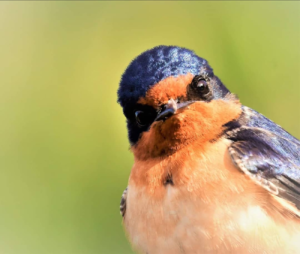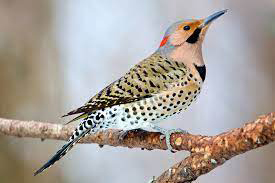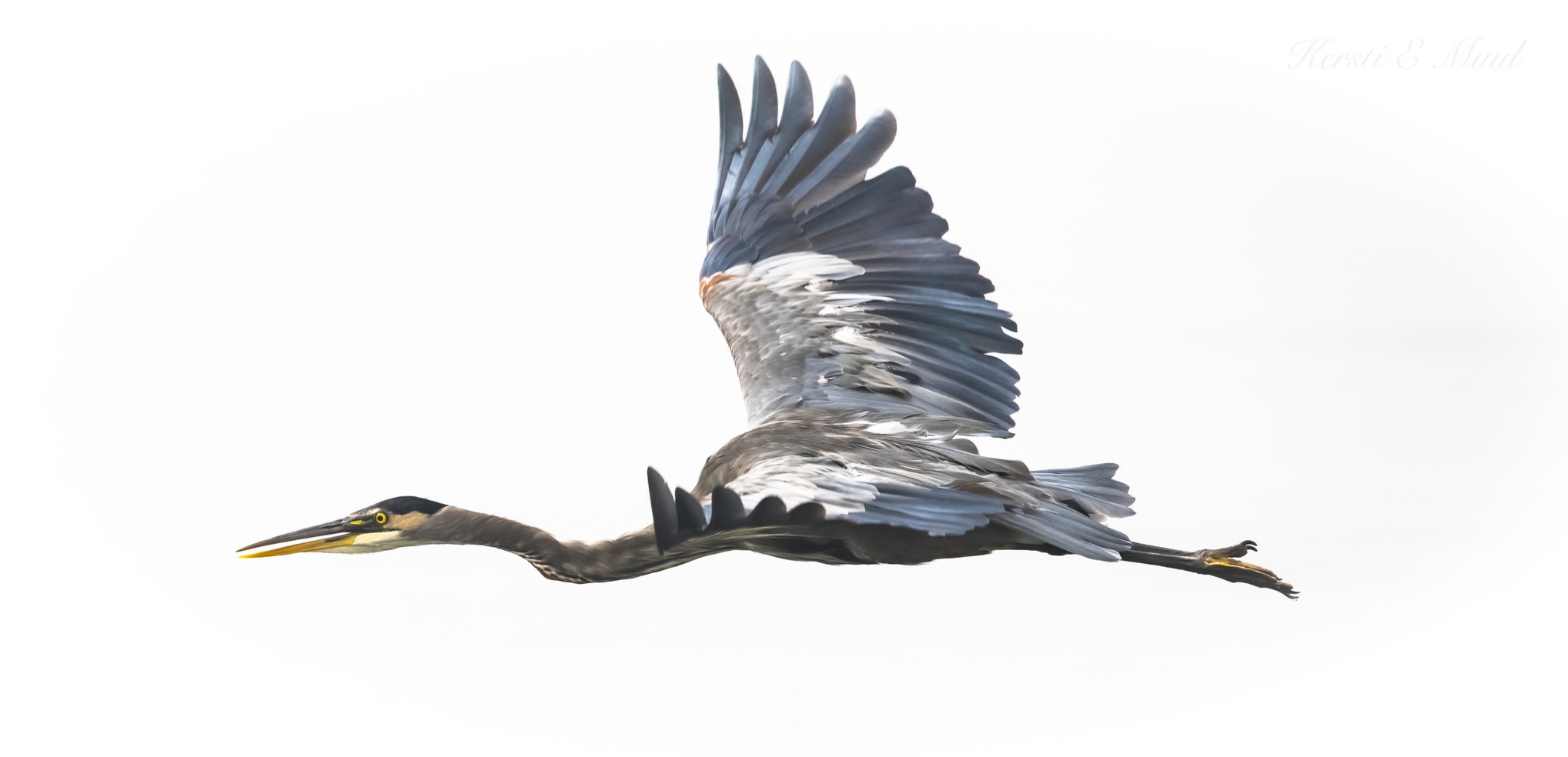Great Blue Heron, Photo Courtesy of Kersti Muul
You’re already outside, enjoying your favorite outdoor activities; you hear birdsong overhead and at eye level you catch a glimpse of a darting little creature that suddenly takes flight. Who are these ethereal avian companions in your experience of being outside? Have you given them additional thought as you hike, kayak, backpack, trail run, cycle or simply look out your window at home?
Birds are with us wherever we are, and their presence outdoors heralds a certain health and persistence of nature in our surroundings. From mountain trail to urban apartment balcony, you’re going to see–and more often hear–birds. You might consider birding as your next complementary hobby to enjoying your favorite outdoor pursuits.
Birding Uses All Your Senses
Notice I am not calling this “bird watching”? That’s because noticing birds is not just something you do with your eyes. You hear birdsong, you might feel the softness of a feather found on the trail, you might taste the same wild fruit foraged by birds you see while berry picking, or you might smell the pungent aroma as you pass by a Great Blue Heron group nesting colony. Noticing birds and how they use the same shared surroundings will add to your sensory experience, no matter where you are.
You Can Bird Anywhere, Anytime
If you stop and listen, or follow the movement caught in the periphery, you will suddenly notice how many birds have been there waiting for your observation. Birds occupy every level of a canopy from ground to tree top; they forage, breed and nest in every possible habitat from lakes and wetlands, beaches and rocky shorelines, meadows and prairies, to backyard nest boxes and skyscraper ledges. They inhabit every elevation from sea level to mountain top, and if you look up even further, they may be flying high above your head during migration. You can start birding right now, simply by beginning to look and listen.

Barn Swallow, photo courtesy of Kersti Muul
Birding is Easy, Inexpensive and at Your Own Pace
You can get started birding with resources you may already have: a pair of binoculars and your smartphone. Binoculars will help you see your feathered neighbors up close to identify features more readily if you want to start learning bird names. Phone apps such as Merlin or Sibley provide instant visual, auditory, behavioral and range reference for what you might be observing.
With such convenient, “already got ‘em” tools, you can ease into birding with very low commitment, to accompany whatever you are already doing. If you decide to up your game, the birding world has expansive resources for learning, travel, social connection, volunteer opportunities and more, a few of which are listed throughout and at the end of this article.
You Can Bird From Your Own Home
If you have a yard you might consider enhancing it for nature with native plants, trees and clean bird baths (both for bird hydration and bathing). Birds are abundant in cities and take advantage of urban and suburban habitat, using it as they would any wilder space. You’ll be surprised how many bird species you might find: densely urban King County in WA State, for instance, has a bird list of over 200 species reported.
Happily, attracting birds to your home is not restricted to those with yards. You can be an apartment dweller and attract birds, too! Attracting birds is more about creating a replication of natural habitat that doesn’t have to include putting out bird feeders (some rentals may not allow feeders, anyway). You can help more birds by creating forage opportunities the way nature intended: Plants that attract insects will attract insect-eating birds such as swallows and flycatchers, two bird species which do not visit feeders. Fruit-bearing plants, native flowers and groundcovers, sappy trees, all will attract different birds with specialized feeding strategies.
In fact, birds need whatever urban nature we can provide, as their habitat is disappearing across their range. Many birds migrate twice a year, and what habitat was there one year may be gone the next. Whatever we can do to support and replace habitat for birds–and enhance our own surroundings–will result in more birds for your viewing pleasure, and healthy, diverse populations for years to come.
You Can Bird in the Field

Northen Flicker
I hope to inspire your interest in adding birding to your already enthusiastic love for the outdoors. And you can start right now, before you even head to the mountains! Begin birding while getting in condition for your favorite outdoor activity. City parks and greenbelts are prime birding spots.
Once you’re feeling your birding chops, you might try birding or field sketching in place while camping or on a backpacking trip. These are just a couple examples of how easy it is to bird while also engaging in your beloved outdoor activities.
Keep Birding with These Additional Resources
If you want to learn more about birds in WA state, I recommend an in-person outdoor bird walk, field trip or event with a local birding expert. There is nothing quite like learning from someone more experienced to enhance your own confidence while birding (much like the whole WOW philosophy that brings women together to learn from each other!).
You can find a birding event through your local parks department or Audubon chapter such as Seattle Audubon or Audubon Washington. Or head out with sister birder Roniq Bartanen of She Birds, a Seattle-based urban bird guide who leads walks around the region (both independently and through the above Audubon chapters and Field Trip Society). Roniq is also an advocate for inclusive, accessible birding with an angle toward a mindful, noncompetitive practice.
If you prefer to listen to your content, you might check out one of the many birding podcasts from established The American Birding Association’s podcast to these birding podcasts hosted by women, curated by podcast host Suzy Buttress of The Casual Birder.

